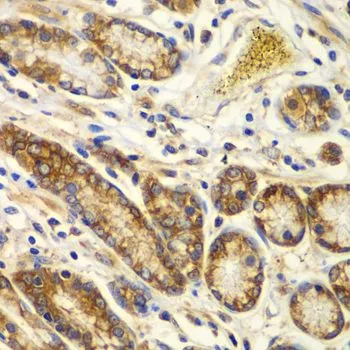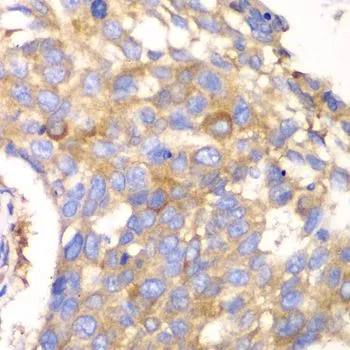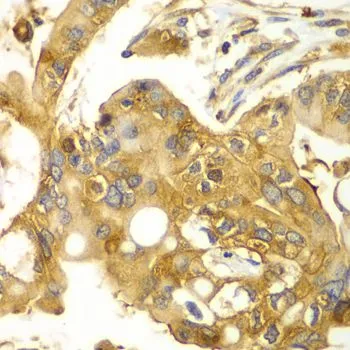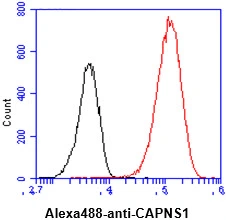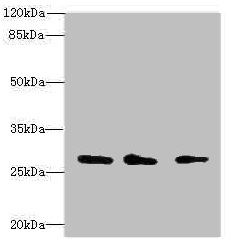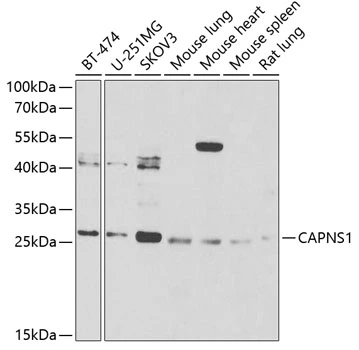
WB analysis of various sample lysates using GTX33058 Calpain S1 antibody. Dilution : 1:1000 Loading : 25microg per lane
Calpain S1 antibody
GTX33058
ApplicationsWestern Blot, ImmunoHistoChemistry, ImmunoHistoChemistry Paraffin
Product group Antibodies
TargetCAPNS1
Overview
- SupplierGeneTex
- Product NameCalpain S1 antibody
- Delivery Days Customer9
- Application Supplier NoteWB: 1:500 - 1:2000. IHC-P: 1:50 - 1:100. *Optimal dilutions/concentrations should be determined by the researcher.Not tested in other applications.
- ApplicationsWestern Blot, ImmunoHistoChemistry, ImmunoHistoChemistry Paraffin
- CertificationResearch Use Only
- ClonalityPolyclonal
- ConjugateUnconjugated
- Gene ID826
- Target nameCAPNS1
- Target descriptioncalpain small subunit 1
- Target synonymscalcium-activated neutral proteinase small subunit; calcium-dependent protease small subunit 1; calcium-dependent protease, small subunit; calpain 4, small subunit (30K); calpain regulatory subunit; calpain small subunit 1; calpain, small polypeptide; CALPAIN4; CANP; CANP small subunit; CANPS; CAPN4; CDPS; CSS1; epididymis secretory sperm binding protein
- HostRabbit
- IsotypeIgG
- Protein IDP04632
- Protein NameCalpain small subunit 1
- Scientific DescriptionThis gene is a member of the calpain small subunit family. Calpains are calcium-dependent cysteine proteinases that are widely distributed in mammalian cells. Calpains operate as heterodimers, comprising a specific large catalytic subunit (calpain 1 subunit in Calpain I, and calpain 2 subunit in Calpain II), and a common small regulatory subunit encoded by this gene. This encoded protein is essential for the stability and function of both calpain heterodimers, whose proteolytic activities influence various cellular functions including apoptosis, proliferation, migration, adhesion, and autophagy. Calpains have been implicated in neurodegenerative processes, such as myotonic dystrophy. A pseudogene of this gene has been defined on chromosome 1. Alternative splicing results in multiple transcript variants. [provided by RefSeq, Oct 2014]
- Storage Instruction-20°C or -80°C,2°C to 8°C
- UNSPSC12352203

